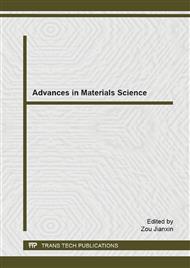p.562
p.569
p.573
p.578
p.583
p.587
p.591
p.599
p.603
Selected Physical and Mechanical Properties of 2-Ply Bamboo Laminated Lumber with Modified Phenol Formaldehyde
Abstract:
In this paper, environmental friendly phenol formaldehyde modified with larch thanaka and urea was used to make 2-ply bamboo laminated lumber. Effects of two assemble patterns (inner to inner and outer to outer) on physical and mechanical properties of 2-ply bamboo laminated lumber from carbonized and bleached bamboo strips were investigated. The results showed that modulus of elasticity (MOE) and modulus of rupture (MOR) of carbonized bamboo laminated lumber were better than that of bleached bamboo laminate lumber. It illustrated that physical and mechanical properties of carbonized bamboo laminated lumber became better. The MOE and MOR of bamboo laminated lumber, bonding with inner (low density surface) to inner surface, were better than that of outer (high density surface) to outer surface. It meant that MOE and MOR of bamboo laminated lumber were increased by the bonding surface density decreased of bamboo unit. Thickness swelling of carbonized bamboo laminated lumber was lower than that of bleached bamboo, which meant its dimensional stability was better than that of bleached bamboo laminated lumber.
Info:
Periodical:
Pages:
583-586
Citation:
Online since:
February 2015
Authors:
Price:
Сopyright:
© 2015 Trans Tech Publications Ltd. All Rights Reserved
Share:
Citation:


